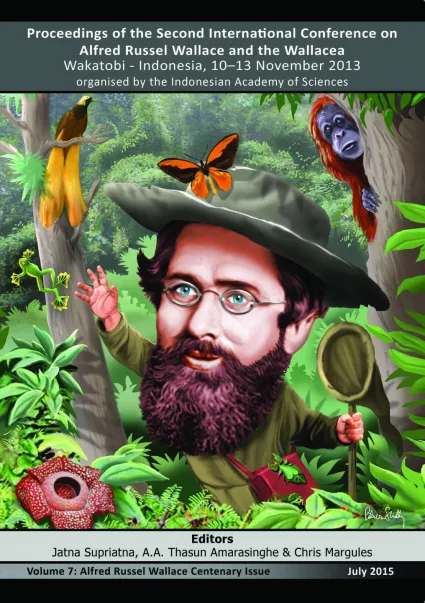

v7i3.189
Wallace Centenary Issue | Volume 7 | Number 3 | 2015
Major Article
ISSN: 1800-427X (print)
eISSN: 1800-427X (online)
Alfred Russel Wallace Centenary Issue
DOI:10.47605/tapro.v7i3.189
Proceedings of the Second International Conference on Alfred Russel Wallace and the Wallacea
Organised by the Indonesian Academy of Sciences
Wakatobi - Indonesia (10–13 November 2013)
J. Supriatna, A.A.T. Amarasinghe, and C. Margules (Editors)
Published date: 30 July 2015
Pp. 170–192, Pls. 10–12.
PRIMATES OF SULAWESI: AN UPDATE ON HABITAT DISTRIBUTION, POPULATION AND CONSERVATION
Jatna Supriatna*, Nurul L. Winarni & Asri A. Dwiyahreni
*Corresponding author. E-mail: jatna.supriatna@gmail.com
Abstract
Wallacea holds great significance not only for evolution and biogeography but also for conservation. No less than 98 species of Wallacea’s endemic mammals, birds, and amphibians appear on the IUCN Red List of globally threatened species. The primates of Wallacea show high diversity and endemicity within a very narrow range. There are 20 species of primates in Wallacea, of which 18 are found only in Sulawesi and the surrounding islands. Among those, three have been described as new species in only the last 10 years, Tarsius tumpara, T. wallacei, and T. lariang. Their habitat is located outside of existing protected areas, which means they need special consideration for their conservation. T. tumpara is one of the 25 rarest primates in the world while Macaca nigra from North Sulawesi has been included as an endangered species on the IUCN Red List. GIS analysis of the habitats of those endemic species shows that the extent of their habitats is shrinking dramatically in North and South Sulawesi and on the small islands of the north and east coast of Sulawesi.
Key words : Sulawesi, endangered, endemic, mammals, protected areas, Tarsius, Wallacea
eISSN: 1800-427X (online)
Alfred Russel Wallace Centenary Issue
DOI:10.47605/tapro.v7i3.189
Proceedings of the Second International Conference on Alfred Russel Wallace and the Wallacea
Organised by the Indonesian Academy of Sciences
Wakatobi - Indonesia (10–13 November 2013)
J. Supriatna, A.A.T. Amarasinghe, and C. Margules (Editors)
Published date: 30 July 2015
Pp. 170–192, Pls. 10–12.
PRIMATES OF SULAWESI: AN UPDATE ON HABITAT DISTRIBUTION, POPULATION AND CONSERVATION
Jatna Supriatna*, Nurul L. Winarni & Asri A. Dwiyahreni
*Corresponding author. E-mail: jatna.supriatna@gmail.com
Abstract
Wallacea holds great significance not only for evolution and biogeography but also for conservation. No less than 98 species of Wallacea’s endemic mammals, birds, and amphibians appear on the IUCN Red List of globally threatened species. The primates of Wallacea show high diversity and endemicity within a very narrow range. There are 20 species of primates in Wallacea, of which 18 are found only in Sulawesi and the surrounding islands. Among those, three have been described as new species in only the last 10 years, Tarsius tumpara, T. wallacei, and T. lariang. Their habitat is located outside of existing protected areas, which means they need special consideration for their conservation. T. tumpara is one of the 25 rarest primates in the world while Macaca nigra from North Sulawesi has been included as an endangered species on the IUCN Red List. GIS analysis of the habitats of those endemic species shows that the extent of their habitats is shrinking dramatically in North and South Sulawesi and on the small islands of the north and east coast of Sulawesi.
Key words : Sulawesi, endangered, endemic, mammals, protected areas, Tarsius, Wallacea
- List of Articles & Contents





